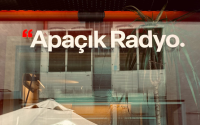Common Dreams / Published on Monday, February 6, 2006 by the Independent / UK
With the Turin Winter Olympics kicking off on Friday, the world's media will be focussing on the events and drama unfolding on the icy slopes of the Italian Alps. As competitors try to smash as many world records as possible, off camera the Games' organisers will be hoping that they themselves will set a new record by staging the most environmentally-aware Winter Games ever.
At the centre of the environmental programme are plans to offset all the greenhouse gas emissions generated by the Games. "Climate change and offsetting carbon dioxide emissions are high priorities for the Turin Winter Games, especially as winter sports and climate change are closely interrelated," says Ugo Pretato, head of environmental programmes at the Games.
So far, environmental groups are cautiously optimistic that the Games' organisers will achieve their goal. "They will not be the best possible Games but will be much better than they could have been," says Sergio Savoia from the WWF's Alpine Programme.
However, no Winter Olympics would ever receive a gold medal for its environmental policies as, according to Savoia: "Skiing itself will always have a large environmental impact."
From the ski tourism-induced traffic pollution and increasing urban sprawl of hotels and holidays homes in former Alpine villages to the visually intrusive and habitat-wrecking ski lifts, the ski industry's environmental record is in all honesty more a contender for the wooden spoon than any Olympic medal.
Luckily, Europe's ski industry is waking up to its environmental responsibilities - just in the nick of time. The spectre of global warming, which has already pretty much seen off the Scottish ski industry, is now stalking the Alps. Scientists have found that rising temperatures are already leading to changes in snowfall patterns. "Alpine areas below 1,600m are now receiving 20 per cent less snow," says Birgit Ottmer from the Davos-based Swiss Federal Institute for Snow and Avalanche Research.
This is bad news for Princes Charles, Wills and Harry, who'll find that their favourite Swiss ski resort of Klosters, at just 1,300m, will soon be surrounded by muddy fields in the depth of winter.
The long-term forecast is even bleaker. "Within 50 years all ski resorts below 1,200m won't have a chance and will go out of business," says Michel Revaz of the Liechtenstein-based Alpine conservation society Cipra. This warning is setting off alarm bells right across Europe's lower-altitude ski resorts, no more so than in Austria where 75 per cent of the ski lifts are built below 1,000m.
The threat posed by global warming to the European ski industry is now being felt right across the Alps. "The French ski industry is very worried for the future as we are having less snow than we used to," admits Jean-Louis Tuaillon, who oversees the pistes at Tignes, one of the many French resorts which attract over a third of the one million British skiers and boarders who head to the Alps every winter.
To try to prevent financial meltdown resorts are increasingly having to rely on making their own snow. In Switzerland, for example, prior to 1990 the making of artificial snow was unheard of. Now more than 10 per cent of Swiss ski areas have to use snow cannons, and over in lower-lying Austria and Italy more than 40 per cent of ski areas need to make their own snow. "Practically no ski area can now survive without artificial snow; you'd face great difficulties if you didn't have it," says Marika Zanoletti of the Davos Klosters Ski Company.
Apart from being hugely expensive to make, though, artificial snow causes long-term damage to the vegetation on the slopes on which it is made. Plus, all resorts now machine-grade their slopes, effectively destroying all the Alpine vegetation, which can take more than 30 years to recover.
The only option open to resorts apart from snow-making is to build their way out of trouble by developing facilities as high up mountains as possible to escape the heat, and to include access to nearby glaciers. Even this strategy, though, isn't without its problems. As resorts expand their operations up the mountains, they'll increasingly come into conflict with wildlife regulations. For many threatened species of plants and animals these remote mountain tops are literally their last stronghold and are often protected by national park status.
Already the Austrian ski industry has succeeded in getting the local authorities in the Tyrol region to lift the ban on ski lifts in a protected area, thereby opening the door to skiing at 3,500m on the Gepatsch glacier.
Building ski facilities close to a glacier, though, is no guarantee for a snow-sure future. Since 1850, Europe's glacial area has reduced by almost half, with the prediction that by the end of the century, most of Europe's glaciers will have melted away. Last spring the Swiss resort of Andermatt hit the headlines when it attempted to save its glacier from melting during the summer by wrapping it in a vast blanket of insulating PVC.
Alarmingly, two years ago the Swiss Federal Institute for Snow and Avalanche Research was commissioned by two Swiss ski resorts to investigate the melting of the Alpine permafrost, that frozen portion of the ground that binds the Alpine slopes together. The evidence that melting was indeed happening was so shocking that the resorts forbade the centre from disclosing it for fear of scaring away their tourists.
In the face of this avalanche of dire warnings, the good news is that despite the fact that climate change has more to do with humanity's global activities than the impact of skiers and boarders whizzing down the slopes, an increasing number of ski resorts, tour operators and other members of the winter sports industry are looking at ways to minimise the impact of skiing on the mountain environment.
The Respect the Mountain campaign was launched last year by the Ski Club of Great Britain in response to the looming climate change crisis now facing the industry. A key feature of the campaign is the Ski Club's pioneering on-line guide to the environmental record of more than 200 ski resorts worldwide.
Information is provided on a wide range of environmental issues including a resort's policy on recycling, renewable energy and climate-change. "By providing skiers and boarders with an environmental guide, we hope to drive up standards by highlighting the resorts that are doing a lot to preserve the environment, as well as those that aren't doing much," says the Ski Club's chief executive Caroline Stuart-Taylor. "We hope that this guide will educate skiers, boarders and the snowsports industry."
A similiar initiative aimed at raising environmental awareness within the North American winter sports industry was launched in the United States in 2002. Run jointly by the National Ski Areas Association and the Natural Resources Defense Council, Keep Winter Cool is supported by more than 300 ski resorts across the US. "Global warming is a key environmental issue and a bottom line issue for the $3bn ski industry and its employees," says NSAA president Michael Berry.
Leading the US ski industry in environmental innovation is the Aspen Ski Company. For the past six years it has been implementing environmental policies on its slopes and has so far scooped up more than 30 awards for its efforts. "The fight against climate change is the single biggest organising principle behind everything that we do in all our environmental programmes," says Auden Schendler, director of environmental affairs at the Aspen Ski Company, which sources five per cent of its energy from wind power and runs its piste-bashers on bio-diesel. "If we don't address climate change issues then we're screwed."
Back in the UK, Betony Garner from Ski Club believes that there's little doubt that climate change is a reality. "Skiers and boarders are some of the first people to see the impact of climate change. Unless we do something now, the mountains that we love may not be the same for our grandchildren."
10 ways to be a greener skier
* Take the train. Flying to your resort is environmental madness as the plane's CO2 emissions will directly threaten the future of your favourite resort. www.raileurope.co.uk/skitrains/
* Slash your own CO2 emissions. When you're not on the slopes help reduce global warming by making simple lifestyle changes such as switching to a renewable electricity company and improving the energy efficiency of your house. www.good-energy.co.uk; www.est.org.uk
* Choose an environmentally aware resort. By supporting resorts that take their environmental responsibilities seriously, you're sending out a powerful message to the winter sports industry. www.respectthemountain.com; www.skiareacitizens.com
* Use local public transport. Help cut local pollution and congestion in Alpine valleys by not hiring a car. Resorts often offer tourists free rides on local buses and trains.
* Keep litter off the slopes. At high altitude orange peel can take up to two years to break down and cigarette butts up to five. Use recycling facilities. If there aren't any, ask why not.
* Offset your carbon emissions. If you choose to fly then reduce the environmental damage by offsetting the CO2 emissions. www.climatecare.org
* Consider another winter sport. Ski touring, cross country skiing and snow-shoeing are all great winter activities which crucially have minimal environmental impact. www.responsibletravel.com
* Encourage environmental responsibility within the winter sports industry. Ask your tour operator if they have a written environmental policy; if they don't, ask why not.
* Respect the mountain habitat and wildlife. Off-piste skiing and boarding can cause massive disturbance to local wildlife. Find out the best places to go to minimise impact.
* Choose a small resort. Larger resorts such as those in the Trois Valles in France have the financial clout to build higher into ecologically sensitive areas. Smaller resorts such as Bad Ragaz in Switzerland cannot afford to expand up the mountain.






